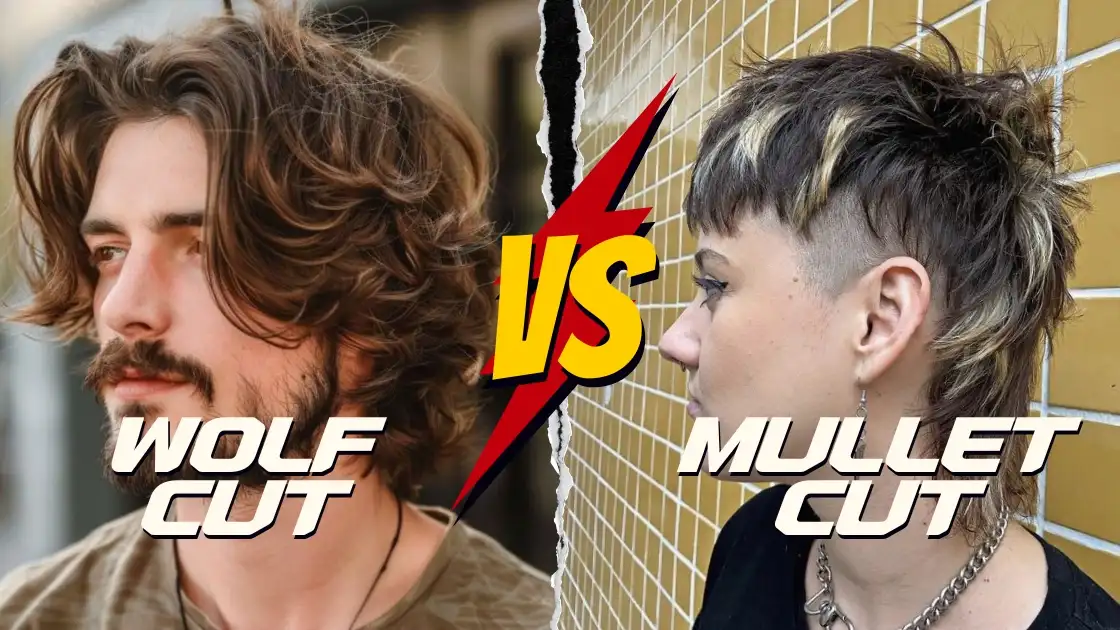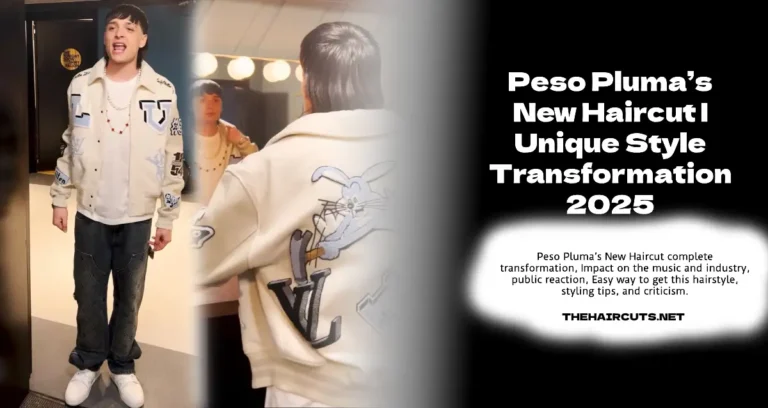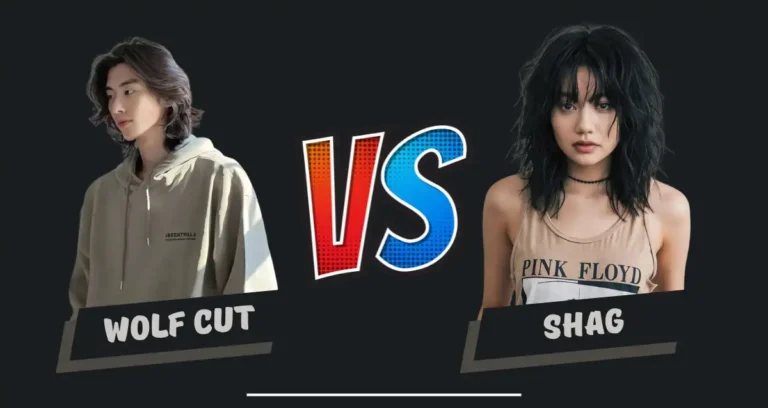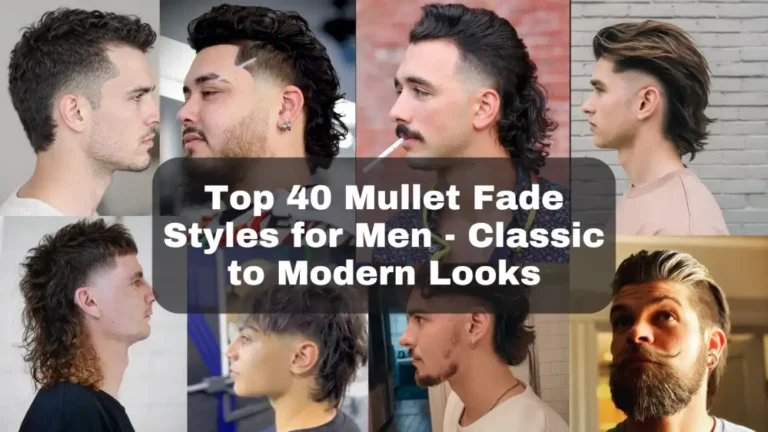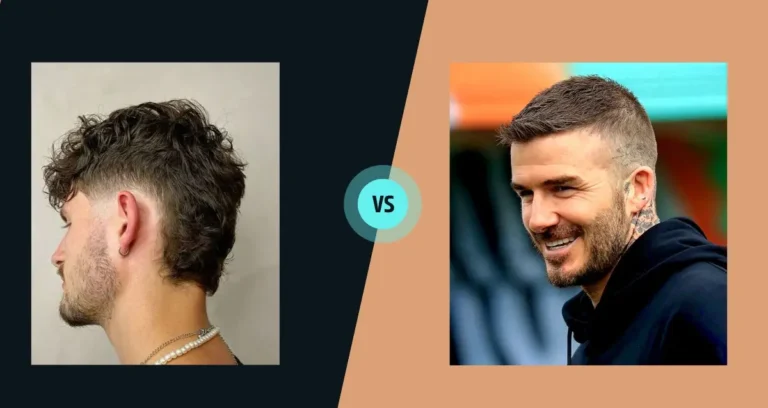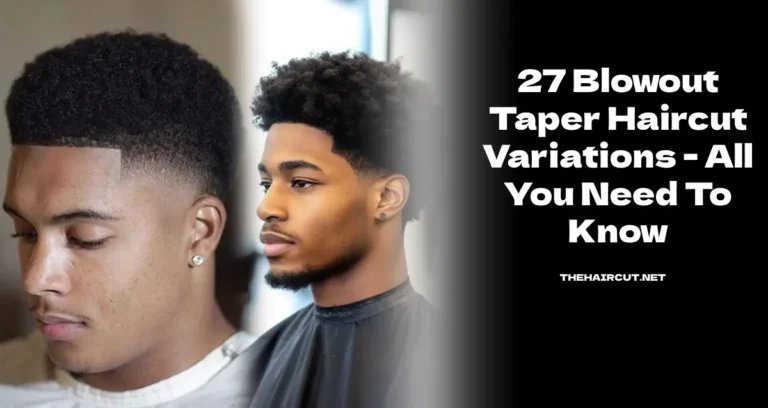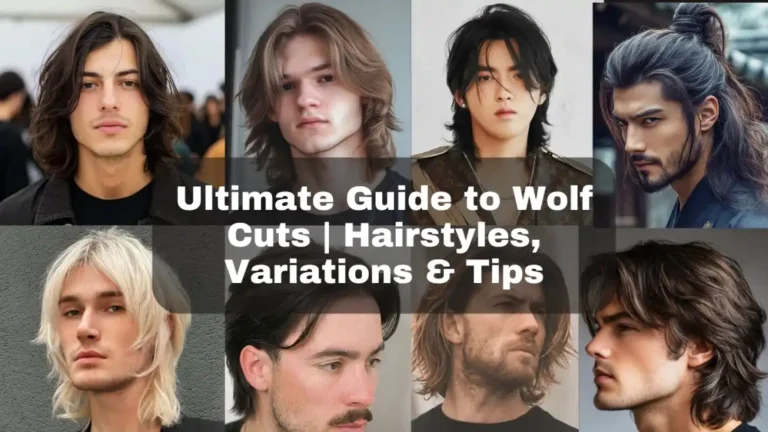Wolf Cut Vs Mullet: Features Of Both Haircuts And Short Introduction
The wolf cut and mullet have taken the hair industry by storm, but what sets them apart? Both embrace a rebellious, edgy aesthetic, often leading to comparisons. The wolf cut is characterized by a layered, shaggy look with abundant volume, reminiscent of a wolf’s mane. It’s versatile, when you work on various hair lengths and textures. The mullet, a classic retro style, features short hair at the front and sides. It hels to transit to longer hair at the back. This iconic cut has seen a resurgence in recent years, with modern adaptations embracing a more refined and stylish approach.
The Truth About the Wolf Haircut
The wolf cut is a modern take on the shag. It features multiple layers that create a textured, voluminous effect. This haircut is characterized by a choppy, uneven fringe, face-framing layers, and a slightly longer, more substantial crown. This dynamic cut originated from the desire for a low-maintenance yet stylish look and has evolved to suit various hair lengths, from short bobs to long, flowing locks. Whether you have straight, wavy, or curly hair, the wolf cut can be adapted to enhance your natural texture and create a personalized, effortlessly cool vibe.
The Truth About the Mullet Cut
The mullet, a haircut synonymous with the 80s, has made a surprising comeback in recent years. Its defining feature is the stark contrast between short hair at the front and sides and longer hair at the back. This haircut is commonly referred to as the “business in the front, party in the back” style. While the classic mullet often evokes a sense of rebellion, modern interpretations have embraced a more refined aesthetic when you use softer transitions and subtle layering. The mullet’s versatility shines through. You would love to know that it can be adapted to suit various hair types and lengths, from short and spiky to long and flowing.
Comparing Wolf Cut and Mullet Cut Side-By-Side
The wolf cut and the mullet are two distinct yet often compared hairstyles that have recently gained significant popularity. The following detailed comparison between these two types of popular haircuts delves into the key features of each cut, exploring their origins, defining characteristics, and suitability for different hair types and face shapes. We’ll compare these trendy styles across various factors, including ease of maintenance, cost, and compatibility with modern lifestyles, to help you make an informed decision about which cut might be the best fit for you.
Which is more common, wolf cut or mullet cut?
Currently, the wolf cut is generally considered more common than the mullet. The wolf cut has experienced a significant surge in popularity in recent years, driven by its versatility and ability to complement various hair textures and lengths. While the mullet has seen a resurgence in recent times, particularly with modern adaptations, it is still often perceived as a bolder and more niche style compared to the more widely embraced wolf cut.
Wolf Cut vs Mullet: Which is more compatible for all Face Shapes?
The wolf cut generally offers greater compatibility with a wider range of face shapes. Its layered and face-framing nature can help soften angular features and add dimension to rounder faces. The mullet, with its more dramatic contrast between short and long sections, can be more challenging to style for certain face shapes. For example, a classic mullet might not be the most flattering option for individuals with round or square faces. However, modern interpretations of the mullet, with softer transitions and more subtle layering, can offer increased versatility and suit a wider range of face shapes.
Which is more easy to be adopted for all types of hair? Wolf cut or mullet
The wolf cut generally offers greater adaptability across different hair types. Its layered structure can work well with straight, wavy, and curly hair, allowing for customization to enhance natural texture. The mullet, particularly in its classic form, can be more challenging to achieve on certain hair types. For example, fine hair might struggle to hold the volume and shape required for a traditional mullet. However, modern interpretations with softer transitions and subtle layering can be more accommodating to various hair textures.
Face Shapes:
- Oval: Both styles can be flattering on oval faces.
- Round: The wolf cut’s layers can help elongate the face, while a modern, less dramatic mullet can also be suitable.
- Square: The wolf cut’s softness can soften angular features, while a mullet cut with sideburns can help elongate the face.
- Heart: Both styles can work, but the wolf cut’s face-framing layers can help balance a wider forehead.
Wolf Cut vs Mullet: Which is more common as a Lifestyle Fashion?
The wolf cut currently aligns more closely with contemporary lifestyle fashion. Its effortless, low-maintenance aesthetic resonates with modern trends. The wolf cut typically requires less styling time than the mullet, often relying on air drying and texturizing products. The mullet, especially the classic version, can require more styling effort to achieve the desired shape and volume.
Haircare Needs:
- Wolf Cut: Texturizing sprays, dry shampoo, and a volumizing mousse are key products. Styling tools may include a diffuser and a round brush.
- Mullet: Hairspray, gel, or pomade might be necessary to define and hold the shape, especially for longer lengths. Styling tools may include a comb and potentially a hairdryer with a concentrator nozzle.
Which is more costly, wolf cut or mullet cut?
The cost of a haircut can vary significantly depending on factors like the stylist’s experience, salon location, and the complexity of the cut. Generally, both the wolf cut and the mullet can have comparable costs. The wolf cut, with its intricate layering and texturizing, might sometimes require slightly more time and expertise, potentially leading to a slightly higher price. However, the difference in cost between the two is usually minimal.
Which is more common among man?
The wolf cut and the mullet are both distinctive hairstyles that have gained popularity in recent years, but they differ significantly in their appearance and the level of commitment they require. The wolf cut is characterized by a blend of short and long layers, creating a textured and voluminous effect. It often features face-framing layers that add softness and dimension.
In contrast, the mullet is defined by a stark contrast between short hair on the sides and back, and longer hair in the back, often resembling a tail. While both styles can be considered edgy, the wolf cut generally presents a more modern and versatile look, while the mullet often carries a bolder, more rebellious image.
Based on current trends and observations, the wolf cut appears to be more common among men than the mullet. The wolf cut’s versatility and adaptability to various hair types and lengths likely contribute to its wider appeal.
Wolf Cut vs Mullet: Which is more easy to maintain?
The wolf cut is generally considered easier to maintain than the mullet. Its layered structure allows for more flexibility in styling and requires less frequent trims to maintain its shape. The mullet, particularly the classic version with a distinct line between short and long sections, requires more regular trims to prevent the longer section from becoming overly long or unkempt. Modern interpretations of the mullet with softer transitions may be easier to maintain, but still generally require more upkeep than the wolf cut.
Which is more common among women?
Again among women, the wolf cut appears to be more prevalent than the mullet. The wolf cut’s softer, more layered look with face-framing elements tends to be more widely embraced and adaptable to various hair textures and lengths.
While the mullet has seen a resurgence in popularity, particularly in its modern iterations, the wolf cut’s versatility and ability to create a more subtle, yet edgy look likely contribute to its greater adoption among women.
Wolf Cut vs Mullet: Which is more trendy?
Currently, the wolf cut holds a stronger position in the realm of trendy hairstyles. Its voluminous, textured look aligns well with contemporary fashion trends that embrace a more effortless and natural aesthetic. While the mullet has experienced a resurgence in popularity, particularly with modern adaptations, the wolf cut’s versatility and adaptability to various hair types and lengths have contributed to its wider appeal and current trend status.
Which has more style customization and variations, wolf cut or mullet cut?
The wolf cut generally offers greater scope for style customization and variations. Its layered structure allows for adjustments in length, texture, and overall shape to suit individual preferences and face shapes. The wolf cut can be adapted to create a variety of looks, from soft and romantic to edgy and rebellious. While the mullet also allows for some customization, its defining feature – the contrast between short and long sections – limits the degree of variation to a certain extent. Modern interpretations of the mullet have expanded its versatility, but the wolf cut still maintains a greater degree of flexibility in terms of styling options.
5 Tips To Make a Catchy Look With Wolf Cut
1. Enhance the texture of choppy layers
The wolf cut thrives on texture and volume. Utilize texturizing sprays, dry shampoo, and volumizing mousse to enhance the choppy layers and create a lived-in, effortless look. Avoid heavy products that can weigh down the hair and diminish the desired volume.
2. Consider Air Drying
Embrace air drying whenever possible to minimize heat damage and maintain the natural texture of the wolf cut. If you must use heat, opt for a diffuser attachment on your hairdryer to enhance volume and minimize frizz.
3. Apply Styling Tools Sparingly
While styling tools can refine the wolf cut, overuse can lead to heat damage and diminish the natural, effortless vibe. Consider incorporating braids or twists into your routine for a unique and low-maintenance textured look.
4. Use head accessories and covering
Accessorize your wolf cut with headbands, clips, and scarves to add a touch of personality and elevate your style. These accessories can help you experiment with different looks and create a unique and individualistic expression.
5. Regular Trims and cuts
Regular trims are essential to maintain the shape and prevent the wolf cut from becoming overly shaggy or uneven. Schedule regular appointments with your stylist to keep your cut looking its best and prevent split ends.
5 Tips To Make a Catcy Look With Mullet Cut
1. Consider Contrast of Sections
The mullet is defined by the stark contrast between short and long sections. Embrace this signature feature by ensuring a clean line of demarcation. Consider using a razor or clippers to achieve a sharp, defined edge.
2. Enhance the cut more with Styling Products
Utilize styling products like pomade, gel, or hairspray to tame flyaways and add definition to the shorter sections. For the longer section, consider using texturizing spray or mousse to create volume and movement.
3. Apply custom textures in the cut
Experiment with different textures within the mullet. Consider adding subtle waves or curls to the longer section for a more modern and textured look.
4. Use accessories and head coverings
Accessorize your mullet with headbands, bandanas, or hats to add a touch of personality and elevate your style. Consider using accessories to draw attention to the unique shape of the cut.
5. Maintain your cut by your own
Regular trims are crucial to maintain the shape and prevent the longer section from becoming overly long or unkempt. Schedule regular appointments with your stylist to keep your mullet looking sharp and stylish
Final Thoughts
Ultimately, the choice between a wolf cut and a mullet depends on individual preferences, lifestyle, and hair type. The wolf cut, with its versatility and low-maintenance appeal, currently dominates the trend scene. 1 However, modern interpretations of the mullet are gaining traction, offering a more refined and adaptable approach to this classic style. 2 Remember to consider factors like face shape, hair texture, styling time, and maintenance requirements when making your decision. Experimentation and consultation with a skilled hairstylist are encouraged to find the perfect cut that complements your unique style and personality.
Disclaimer
| This information is for general knowledge and informational purposes only and does not constitute professional advice. The suitability of any particular hairstyle may vary depending on individual factors. It is always recommended to consult with a qualified hairstylist for personalized advice and guidance. |

